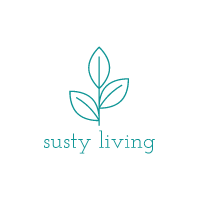Task 1: Analysis of a case of advocacy and activism
Objective: To analyse a case of advocacy and activism in the EU in order to understand its objectives and draw inspiration from it.
Materials needed: Internet access or books/documents containing information on cases of advocacy and activism in the EU.
Steps:
- Choose a case of advocacy and activism in the EU that interests you. You can look for examples such as the fight for LGBTQ+ rights, environmental advocacy, promoting gender equality, etc.
- Research detailed information about the chosen case, including the objectives of the activism and the actions taken to achieve them.
- Reflect on the challenges faced by the group or individual involved in the activism and how they sought to overcome them.
- Consider how you can be inspired by this case of advocacy and activism to promote positive change in your own context or community.
- Share your reflections and discuss how these experiences can be applied at a local or personal level.
Task 2: Comparing different forms of activism
Objective: To explore different forms of activism around the world and understand the differences and similarities between them.
Materials needed: Internet access or books/documents with information on different forms of activism, PC.
Steps:
- Identify different stories or cases of activism from different parts of the world. You can focus on specific issues such as human rights, environment, social justice, etc.
- Analyse the differences and similarities between different approaches to activism, including objectives, strategies used, and impact achieved.
- Make a list of the similarities and significant differences you have identified.
- Reflect on the lessons learned from these different forms of activism and consider how they could be adapted or applied in the EU context.
- Share or write down your observations and encourage discussion on how these different forms of activism can influence advocacy strategies in the EU context.
Task 3: Simulating an Amnesty International-inspired advocacy campaign at home
Objective: To experience a home-based advocacy campaign inspired by the activities of Amnesty International, promoting human rights and raising awareness of the issues the organisation works on.
Materials needed:
Internet access or books/documents containing information about Amnesty International’s activities.
Computer or mobile device.
Virtual posters or sheets of paper for taking notes.
Documents for creating digital materials (if desired)
Steps:
- Research information about Amnesty International’s advocacy activities, focusing on a particular campaign or issue of particular interest to you (e.g. refugee rights, abolition of the death penalty, women’s rights, etc.).
- Make notes on the advocacy strategies used by Amnesty International and the objectives they set for their campaigns.
- Reflect on the challenges that Amnesty International has faced in carrying out its campaigns and how it has sought to overcome them.
- Identify a human rights issue or concern that is important to you and that you would like to promote through your home-based advocacy campaign.
- Develop a plan for your campaign, including specific objectives, actions to be taken and target audience.
- Use your computer or mobile device to create digital materials for your campaign, such as images, graphics, presentations, or videos (if desired).
- Use social media or other online channels to share your materials and raise awareness of your advocacy campaign. You can also send emails or write blog posts or forum posts to get others involved in your cause.
- Evaluate the effectiveness of your campaign by tracking engagement, feedback and actions generated.
- Reflect on the experiences and challenges you faced during your campaign and consider how to improve your advocacy in the future.
- Share the results and lessons learned with others, both online and offline, to inspire them to take action for human rights.
This activity allows you to experience a home-based advocacy campaign, inspired by Amnesty International’s activities. By working independently, you can help promote human rights and raise awareness of the issues the organisation works on.
